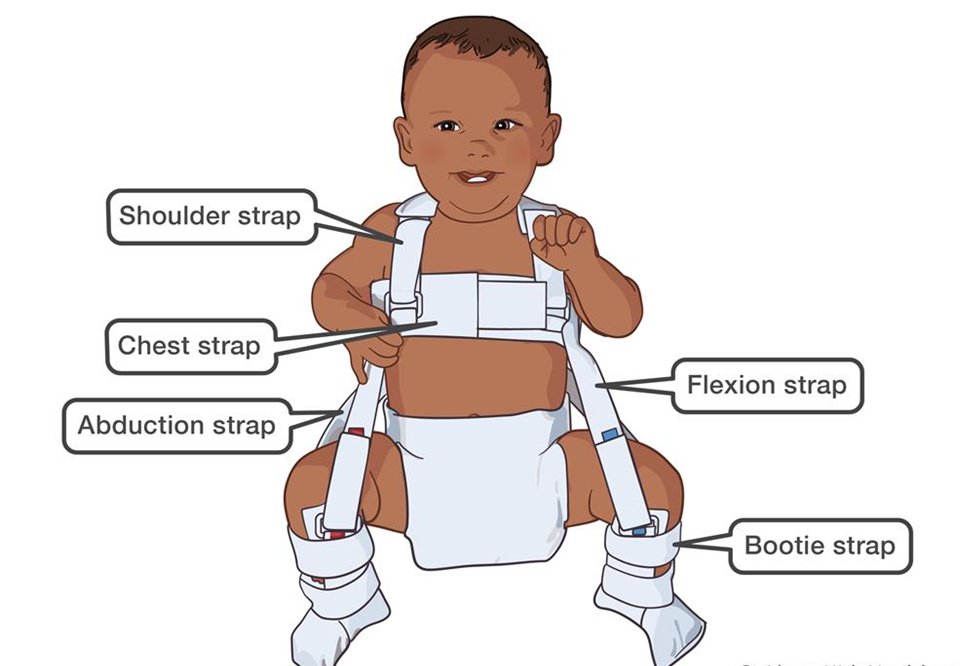A nurse is collecting data from an infant. Which of the following sites is the most reliable location to check the infant's pulse?
Apical
Dorsalis pedis
Temporal
Carotid
The Correct Answer is A
A. Apical:
The apical pulse is the most reliable location to assess the pulse in infants. It is located at the apex of the heart, which is typically found at the fifth intercostal space at the midclavicular line. Assessing the apical pulse allows for a direct measure of the heart rate and rhythm, which is especially important in infants to evaluate cardiac function accurately. The apical pulse is commonly assessed using a stethoscope placed at the point of maximum impulse (PMI) on the chest.
B. Dorsalis pedis:
The dorsalis pedis pulse is located on the top of the foot, typically in the region between the first and second metatarsal bones. While the dorsalis pedis pulse can be palpated in older children and adults, it may be difficult to palpate accurately in infants, especially those with smaller or more delicate feet. Therefore, it is not the preferred site for pulse assessment in infants.
C. Temporal:
The temporal pulse is located on the side of the head, just above the ear. While the temporal pulse can be palpated in some individuals, it is not typically used to assess the pulse in infants. Palpating the temporal pulse in infants may be more challenging and less reliable compared to other pulse sites, especially given the smaller size of the temporal artery in infants.
D. Carotid:
The carotid pulse is located in the neck, alongside the trachea, and can be palpated by gently pressing the fingers against the carotid artery. While the carotid pulse is easily palpable in adults and older children, it is not typically the preferred site for pulse assessment in infants. Palpating the carotid pulse in infants carries a risk of injury to the delicate structures in the neck and may not provide an accurate representation of the pulse rate.
Nursing Test Bank
Naxlex Comprehensive Predictor Exams
Related Questions
Correct Answer is B
Explanation
A. Decreased stridor: Stridor is a high-pitched, noisy breathing sound caused by turbulent airflow through a narrowed or partially obstructed airway. In laryngotracheobronchitis, stridor is often present and may worsen with increasing airway obstruction. Therefore, decreased stridor would not be a typical finding associated with airway obstruction in this condition.
B. Increased restlessness: Increased restlessness can be a sign of worsening respiratory distress and impending airway obstruction. As the child struggles to breathe, they may become increasingly agitated and restless, indicating the need for prompt intervention to ensure adequate oxygenation.
C. Decreased heart rate: Decreased heart rate (bradycardia) is not typically associated with airway obstruction in laryngotracheobronchitis. In fact, the heart rate may increase as a compensatory response to hypoxia and respiratory distress.
D. Decreased temperature: Changes in temperature are not typically associated with airway obstruction in laryngotracheobronchitis. The focus of monitoring in this condition is primarily on respiratory distress and signs of worsening airway obstruction.
Correct Answer is D
Explanation
A. "I will use powders & lotion on his skin around the harness clasps."
This statement indicates a misunderstanding. Powders and lotions should generally be avoided around the harness clasps because they can interfere with the proper fit of the harness and cause irritation or discomfort to the baby's skin.
B. “I will remove the harness daily, prior to giving the bath.”
This statement is incorrect. The Pavlik harness is typically not removed for bathing, as it needs to be worn continuously to maintain proper positioning of the hips and promote optimal healing. Removing the harness daily for bathing can disrupt the treatment process and delay progress.
C. "I will adjust the harness straps every day."
This statement indicates a misunderstanding. The harness should not be adjusted daily without guidance from the healthcare provider. The straps of the Pavlik harness are initially adjusted by the healthcare provider to ensure proper fit, and they should remain in place without frequent adjustments to maintain stability and effectiveness.
D. "I will check my baby's skin under the straps frequently."
This statement indicates an understanding of the teaching. It is essential for the mother to regularly check her baby's skin under the harness straps for any signs of irritation, redness, or pressure sores. Monitoring the skin closely allows for early detection of any issues that may arise from wearing the harness.

Whether you are a student looking to ace your exams or a practicing nurse seeking to enhance your expertise , our nursing education contents will empower you with the confidence and competence to make a difference in the lives of patients and become a respected leader in the healthcare field.
Visit Naxlex, invest in your future and unlock endless possibilities with our unparalleled nursing education contents today
Report Wrong Answer on the Current Question
Do you disagree with the answer? If yes, what is your expected answer? Explain.
Kindly be descriptive with the issue you are facing.
